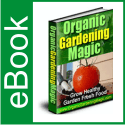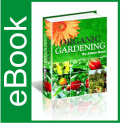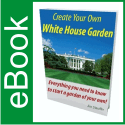Easy Tips For Planting Garden Bulbs
Easy Tips For Planting Garden Bulbs
Article by Lee Dobbins
Garden bulbs are a great way to get color in your garden year after year without having to replant. But many people are intimidated by planting and caring for bulbs, and never get to experience these great flowering plants. These easy tips for planting garden bulbs will show you there is nothing to fear and have you planting your first bulb garden in no time!
Most bulb plants are actually rather hardy and planting them is quite easy. All it takes is a bit of planning and being able to follow the directions on the bulb package. As is the way of nature, your bulbs will really put in an effort to bloom so you really have to screw up to get them to fail.
The most important thing to do to ensure good blooming plants is to read the package. On there you will find the depth that the bulb needs to be planted. This is important because each type of flower likes to be put in at a different depth. As a general rule of thumb, the bigger the bulb the deeper the hole. Usually you will find the directions telling you to plant 3 times as deep as the bulb or 4 times as deep. Each bulb is different so follow the directions for best results.
Another important thing is not to skimp when digging the hole. Be prepared to dig out anywhere from 5 to 10″. It helps to have a good digging tool and to pick a spot where the soil is loose and not full of roots. Loosen up some of the oil around the bulb and plant it with the pointy part up. Of course, it’s not obvious in all bulbs which part is the pointy part but don’t panic if you can’t tell. Just do your best and nature will take over and usually get the flower growing in the right direction.
If you buy bulbs ahead of time, store them in a cool dry place and keep them in the package until you are actually digging the hole for them. This way you will be able to tell which bulbs you are planting. If you take them out, you might get confused as to which is the tulip and which is the daffodil as many bulbs can look amazingly similar.
Most bulbs like to be planted in full sun and always in soil with good drainage. It’s a good idea to decide on where you will be planting the bulbs before you buy them so you know how many to get. You don’t want them to be overcrowded at fist as they will multiply over time. Be sure to read the package to determine how far apart they should be planted and the optimum conditions for the type of flower you are planting.
Preparing the soil is another important step in planting bulbs. You want to loosen the soil in the bulb hole and mix in some compost or organic matter. Don’t put fertilizer in the hole as this can damage the young roots and it is not necessary – your plant has all the nutrients it needs right inside the bulb!
Place the bulb in the hole and cover loosely with dirt. Dig a shallow moat around the bulb and water thoroughly so that the moat is full. Let the moat drain then fill in the rest of the soil and pack lightly. Give it a final thorough watering and you’re done!
Planning your bulb garden is important for antithetic purposes. Put the taller bulbs in back and the shorter ones in front. If you have a garden that can be viewed from all sides then put the taller bulbs in the middle. Since most bulbs only bloom for a few weeks, you need to include bulbs with all different bloom times in your garden. Buy bulbs that bloom in early spring, late spring, early summer and late summer and plant them all in the same area for color all season long. You can plant them next to each other or even in the same hole. If you time things perfectly, you will have one plant starting to bloom as another is ending.
Keeping your bulbs healthy and vibrant is easy. Remember to water them per instructions and fertilize them yearly. When your flower is done blooming, do not remove the leaves until they have turned brown – the green leaves are gathering nutrients to be stored in the bulb for next years flower!
About the Author
Lee Dobbins writes for http://www.backyard-garden-and-patio.com where you can get more great gardening tips
Use and distribution of this article is subject to our Publisher Guidelines
whereby the original author’s information and copyright must be included.

 May 19, 2012
May 19, 2012 







